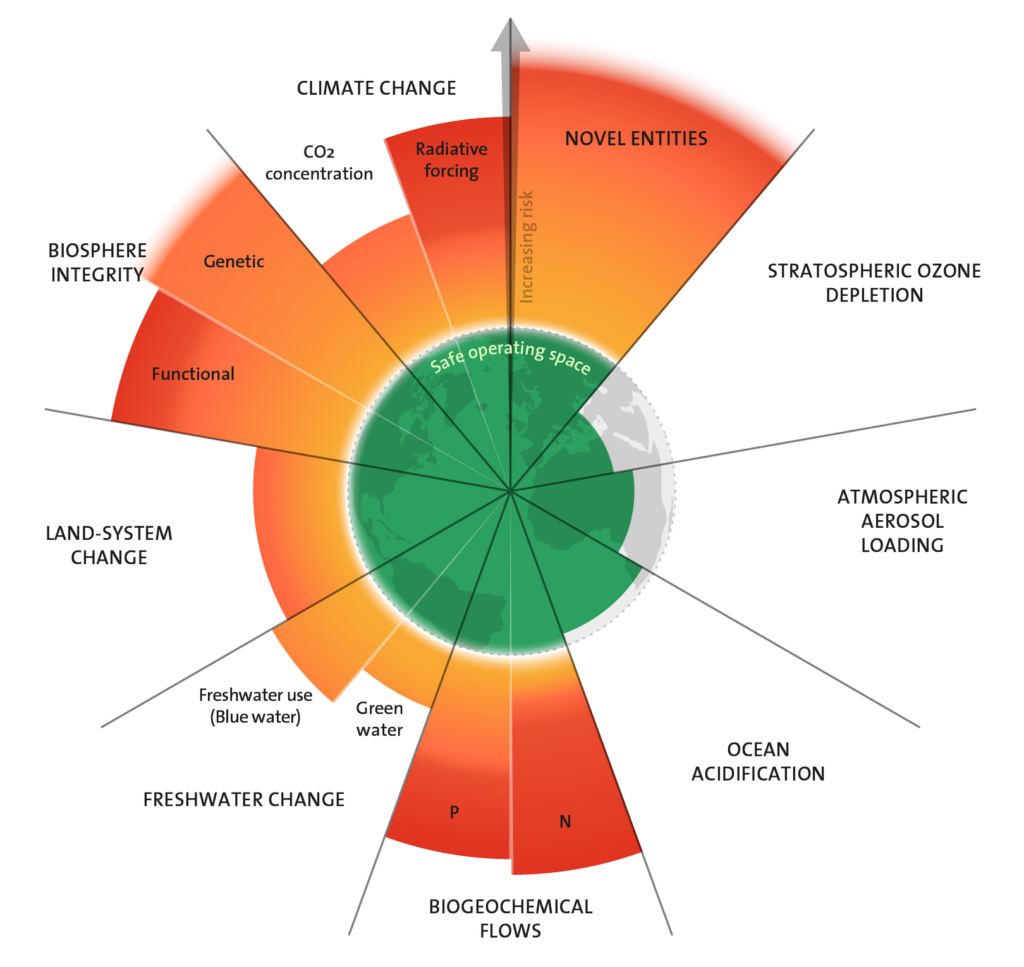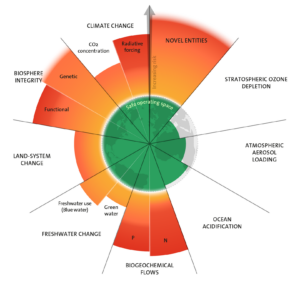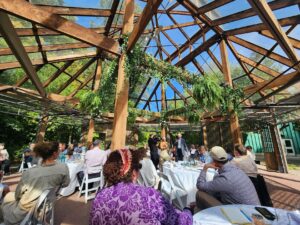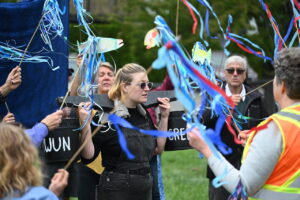The Cascadia Department of Bioregion and Regenerate Cascadia are excited to partner with the University of Washington Professional and Continuing Education’s GIS Certificate program to develop a project to create an interactive educational tool mapping planetary boundaries within the Cascadia bioregion.
GIS Project Proposal: Mapping Planetary Boundaries within the Cascadia Bioregion
The Planetary Boundaries framework, introduced in 2009 by Johan Rockström and a team of scientists, identifies nine key processes that regulate the stability and resilience of the Earth’s system. These boundaries define the safe operating space for humanity, within which societies can thrive without triggering large-scale or irreversible environmental changes. In 2023, scientists provided a comprehensive quantification of all nine boundaries, revealing that six have already been crossed, posing significant risks to the planet’s systems.
The nine planetary boundaries are:
- Climate Change: Rising greenhouse gases destabilize the global climate.
- Biosphere Integrity: Loss of biodiversity threatens ecosystem resilience.
- Land-System Change: Human land use disrupts natural ecosystems.
- Biogeochemical Flows: Disruption of nitrogen and phosphorus cycles harms water and soil.
- Freshwater Use: Overuse of water impacts ecosystems and human needs.
- Ocean Acidification: Excess CO2 makes oceans more acidic, harming marine life.
- Atmospheric Aerosol Loading: Air pollution affects climate and human health.
- Stratospheric Ozone Depletion: Decreasing ozone increases harmful UV radiation.
- Novel Entities: New substances like chemicals and plastics disrupt natural systems.
Crossing boundaries increases the risk of generating large-scale, abrupt, or irreversible environmental changes. Drastic changes will not necessarily happen overnight, but together the boundaries mark a critical threshold for increasing risks to people and the ecosystems we are part of. Planetary Boundaries are interdependent, meaning that if we cross one Boundary, we will affect others, or even cause them to cross out of the safe operating space. Boundaries are interrelated processes within the complex biophysical Earth system. We cannot consider Planetary Boundaries in isolation in any decision making on sustainability. Only by respecting all nine boundaries can we maintain the safe operating space for human civilization.
This proposed GIS project aims to develop an interactive educational tool that visualizes the planetary boundaries in the context of the Cascadia bioregion. It invites students to creatively think about and incorporate local indicators such as salmon recovery, dam removals, recent wildfire activity, and other regional physical, ecological or cultural factors they feel would be important to map. The project will allow users to explore how these boundaries have shifted over time and intersect with local efforts to manage ecological health and sustainability.
In addition, students will be asked, and examine: What are the local bioregional boundaries that we need to pay attention to, which are unique to this place and might not be represented in the global planetary boundaries?






